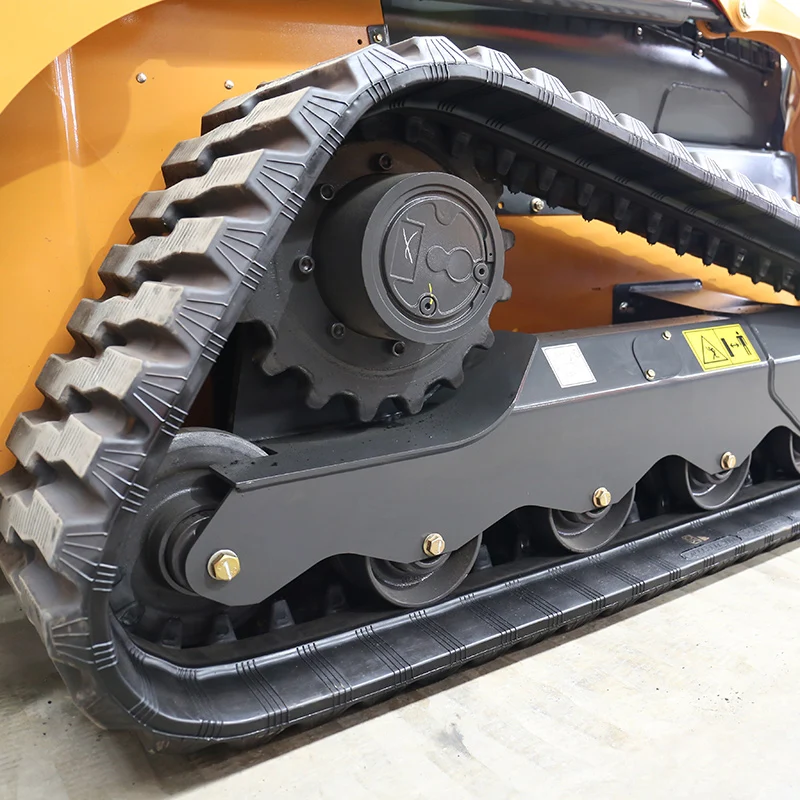Proper track tension is crucial for maintaining the performance and longevity of heavy equipment. From preventing detracking to minimizing wear on undercarriage components, maintaining optimal track tension is essential for efficient operation. In this blog post, we’ll delve deeper into track tension tips and techniques to ensure your equipment operates at its best.

Understand the Importance of Proper Tension:
Proper track tension is crucial for the smooth operation and longevity of heavy equipment. When it comes to track tension, finding the right balance is paramount. Tracks that are too loose risk detracking, where they may come off the sprocket or idler, leading to downtime and potential damage to the machine. On the other hand, tracks that are over-tightened can cause excessive wear on components such as rollers and idlers, as well as premature tearing of the tracks themselves.
To ensure optimal track tension, it’s important to consult the operator’s manual provided by the equipment manufacturer. This manual contains detailed instructions and guidelines for inspecting and adjusting track tension specific to your machine model. By following these procedures, you can effectively maintain the proper tension levels required for safe and efficient equipment operation.
Regular track inspections are essential for identifying any issues with tension and addressing them promptly. Visual checks can reveal signs of loose tracks or excessive wear on components, indicating the need for adjustment. Additionally, monitoring the performance of the equipment during operation can help detect any abnormalities that may be indicative of improper track tension.
Learn How to Adjust Track Tension:
Track tension adjustments are typically made using a track adjuster located behind the front idler. These adjustments involve pumping or draining grease through the adjuster valve to achieve the desired tension. Even small changes in track sag can significantly impact tension levels, so it’s crucial to follow the specific procedures outlined in your operator’s manual.
Periodically Inspect the Adjuster Valve:
Regular visual inspections of the adjuster valve are necessary to ensure it’s functioning correctly. Any signs of leakage should prompt immediate attention, as leakage can lead to a loss of track tension and increased wear. Addressing issues promptly can help prevent more significant problems down the line.
Match Tension to Operating Conditions:
Track tension requirements may vary depending on the operating conditions, such as soil type and terrain. It’s essential to adjust track tension on-site to account for these variations. Making frequent adjustments based on packing conditions can help optimize track performance and minimize wear.
Avoid Operating Frozen Tracks:
Operating heavy equipment with frozen tracks can lead to irreversible damage. If your tracks become frozen, it’s best to wait for the weather to improve before attempting to use the equipment. Attempting to force frozen tracks to move can result in costly repairs and downtime.
Practice Smooth Operation Techniques:
Abrupt turns and high speeds can place unnecessary stress on tracks and undercarriage components, leading to accelerated wear. Avoiding abrupt maneuvers and operating at lower speeds can help prolong the lifespan of your equipment’s tracks and undercarriage.
Schedule Regular Inspections:
Annual inspections by trained technicians are essential for identifying potential issues early on and preventing unnecessary damage. A thorough inspection can help detect worn components or other issues that may affect track performance and longevity.
Conclusion: Proper track tension is critical for ensuring the efficient operation and longevity of heavy equipment. By understanding the importance of maintaining optimal tension levels and following these essential tips and techniques, you can minimize wear, prevent detracking, and maximize the performance of your equipment’s tracks and undercarriage.
